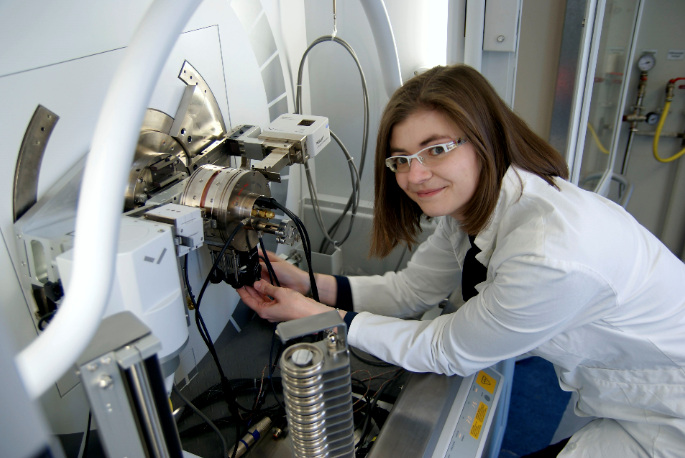
Improving the efficiency of luminescent borate glasses and glass ceramics as temperature-stable light converters is a major challenge. A new approach is being pursued by the Fraunhofer Application Center (AWZ) for Inorganic Phosphors in Soest in collaboration with the South Westphalia University of Applied Sciences. By means of targeted modification of the network structure and generation of scattering centers, the efficiency of luminescent systems could be improved.
Luminescent borate glasses and glass ceramics offer a promising application as temperature-stable light converters, such as those used in lighting technology. The recently completed doctoral project of Dr. Charlotte Rimbach from the University of Applied Sciences Südwestfalen in cooperation with the Fraunhofer AWZ starts here. The work investigates new approaches to increase the efficiency of borate glasses and glass ceramics. "A targeted change in the network structure and growth of scattering centers initiated by thermal post-treatment offer promising possibilities," explains Rimbach, a staff member in the Department of Electrical Power Engineering at the South Westphalia University of Applied Sciences in the working group of Prof. Dr. Stefan Schweizer, head of the Fraunhofer Application Center Soest.
To increase the optical path length by scattering from grown crystallites in the glass and thus to increase the light yield, the glasses with different compositions were further processed into glass ceramics by crystallization. Using Raman spectroscopy, a spectroscopy technique that utilizes the interaction of light with matter, the scientist first analyzed the glass structure. The crystallization behavior was evaluated by using differential scanning calorimetry, a technique that measures the amount of heat emitted and absorbed by a sample during isothermal and non-isothermal operation. The final analysis of the light output was performed by optical spectroscopy.
"The studies show that the lithium concentration has a significant effect on the near-field structure, glass transition, crystallization temperature, and luminescence properties of the glass. The timing of crystallization, i.e., the transition from glass to glass ceramic, shifts to lower temperatures for the glass systems with increasing lithium concentration," Rimbach adds.
A comparison of the glass stabilities of the glass systems studied shows that a lithium-aluminum borate glass with a lithium-to-boron ratio of 1:2 is best suited for glass ceramic production. The size and proportion of crystallites produced in the glass can be controlled by thermal treatment, in which the material is heated at temperatures above 500 °C for a prolonged period, as a function of time and temperature as well as the heating rate. Optical measurements on the glass ceramics show that the scattering properties can be adjusted with the treatment time as desired.
"Charlotte Rimbach's scientific results represent an important contribution to basic research in the phosphor field. The excellent findings can be incorporated into further application-related research projects at our Fraunhofer AWZ," explains Prof. Dr. Stefan Schweizer, PhD supervisor and head of the Fraunhofer Application Center Soest.
The complete thesis entitled "Optimization and characterization of luminescent lithium aluminum borate glasses and glass ceramics" can be viewed at the following link: http://dx.doi.org/10.25819/ubsi/9897